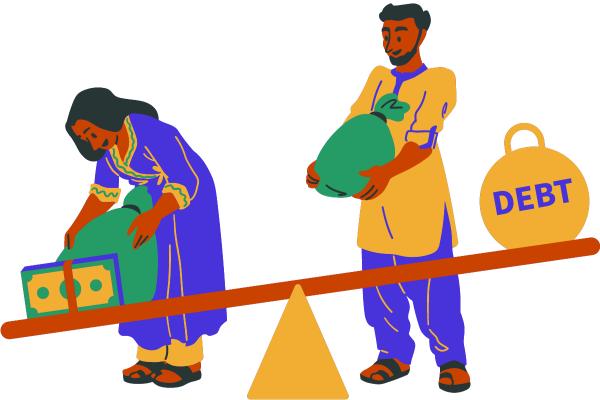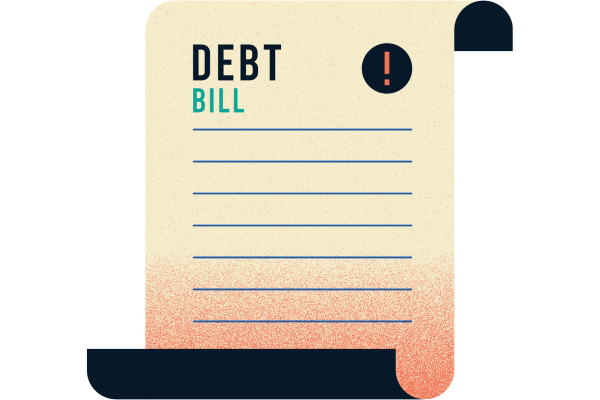Understanding the Central Government’s Debt Obligations
Introduction:
India’s Central government, like any household or business, operates within a financial framework that involves managing income, expenses, and, of course, debt. In this article, we’ll take a closer look at the debt obligations of India’s Central government, demystifying the complex world of fiscal responsibility.
Table of Contents
Understanding Government Debt:
At its core, government debt is a result of borrowing to fund public expenditures when revenues fall short. The Central government, like any other entity, borrows money through various instruments to bridge the gap between income and expenses. This debt is categorized into two types: internal and external.
Internal Debt:
Internal debt refers to the funds borrowed within the country. The Central government issues bonds and securities, known as Government of India Securities (G-Secs), to domestic investors. These instruments provide an avenue for individuals, banks, and financial institutions to invest in government debt. The government pays periodic interest on these securities and returns the principal upon maturity.
On the other hand, external debt involves borrowing from foreign sources. This can include loans from international organizations, bilateral agreements with other countries, or issuing sovereign bonds in the global market. While external debt can diversify funding sources, it also exposes the government to currency exchange rate risks.

External Debt:
Key Components of India’s Central Government Debt:
Market Loans:
The government raises funds through market loans, primarily in the form of dated securities with varying tenures. Investors, ranging from individual citizens to financial institutions, buy these securities, contributing to the government’s debt.
Ways and Means Advances (WMA):
The Reserve Bank of India (RBI) provides short-term funds to the Central government through Ways and Means Advances to meet temporary mismatches in cash flow. This acts as a financial cushion for the government.
State Provident Funds:
State Provident Funds, managed by state governments, also contribute to the Central government’s debt. These funds invest in government securities, providing a stable source of internal borrowing.
External Assistance:
To finance developmental projects and infrastructure, the government secures external assistance from international organizations and foreign governments. This external debt plays a crucial role in fostering economic growth.
Debt Sustainability and Management:
While debt is a tool for financing, managing its levels is crucial for economic stability. Excessive debt can lead to debt-servicing challenges, affecting the government’s ability to invest in crucial areas like education, healthcare, and infrastructure.
The Fiscal Responsibility and Budget Management (FRBM) Act:
To maintain fiscal discipline, India has the FRBM Act in place. This legislation aims to reduce fiscal deficits and contain the overall debt burden. It sets targets for reducing revenue and fiscal deficits, emphasizing prudent fiscal management.
Debt-GDP Ratio:
One commonly used metric for evaluating debt sustainability is the debt-to-GDP ratio. A lower ratio signifies a healthier fiscal position, indicating that the country’s economic output is sufficient to service its debt. The Central government constantly monitors and adjusts its borrowing plans to keep this ratio within acceptable limits.
Impact of COVID-19:
The COVID-19 pandemic has posed unique challenges to India’s fiscal landscape. Increased spending on healthcare, relief measures, and economic stimulus packages has led to a temporary surge in government borrowing. However, a balanced approach is crucial to prevent long-term fiscal ramifications.
Conclusion:
In the grand tapestry of India’s economic story, the Central government’s debt obligations play a pivotal role. From market loans to external assistance, each component is a thread woven into the fabric of the nation’s financial stability. As citizens, understanding these dynamics empowers us to actively participate in discussions about fiscal policies, ensuring a sustainable and prosperous future for India.
State Government Debt in India
While we often hear about the economic policies of the Central government, it’s equally important to shine a light on the fiscal responsibilities of state governments in India. In this article, we’ll explore the debt obligations of state governments, demystifying the financial intricacies that shape our regional economies.

Understanding State Government Debt:
Similar to the Central government, state governments borrow funds to meet their financial requirements. This debt is instrumental in financing a range of activities, from infrastructure projects to social welfare programs. Let’s delve into the key aspects of state government debt and how it influences the economic landscape.
Internal Borrowing:
State governments predominantly rely on internal sources for borrowing. They issue bonds and securities, known as State Development Loans (SDLs), in the domestic market. These loans are essentially a way for states to tap into the financial resources within their boundaries, involving participation from individuals, banks, and financial institutions.
Development Expenditure:
A significant portion of state government debt is directed towards funding developmental activities. These projects include building roads, schools, hospitals, and other essential infrastructure. State governments often borrow to invest in projects that contribute to the overall economic growth and well-being of their residents.
Social Welfare Programs:
Debt is also incurred to finance various social welfare programs. These initiatives aim to uplift marginalized communities, provide healthcare services, and improve education facilities. State governments play a pivotal role in ensuring that the benefits of economic progress reach all sections of society.
Challenges and Considerations:
While borrowing is a necessity, managing the debt burden is crucial. State governments must strike a balance between fulfilling their obligations and maintaining fiscal discipline. Excessive debt can lead to challenges in debt servicing, potentially affecting the ability to invest in crucial sectors.
Fiscal Responsibility Legislation:
Much like the Central government, several states in India have implemented Fiscal Responsibility Legislation (FRL) to ensure prudent fiscal management. These laws set targets for reducing fiscal deficits and maintaining a sustainable debt level, promoting responsible financial practices.
Debt Sustainability:
Monitoring the debt-to-GDP ratio is a common practice to assess the sustainability of state government debt. A lower ratio indicates a healthier fiscal position, suggesting that the state’s economic output is sufficient to service its debt. Striking the right balance is essential for long-term economic stability.
COVID-19 Impact:
The COVID-19 pandemic has added an extra layer of complexity to state government finances. Increased spending on healthcare, relief measures, and economic recovery plans has led to a temporary surge in borrowing. States are grappling with the challenge of managing these elevated debt levels while ensuring the well-being of their citizens.

Conclusion:
State government debt is a dynamic aspect of India’s fiscal landscape, influencing the development trajectory of each region. As citizens, understanding these financial intricacies empowers us to engage in meaningful discussions about our state’s economic health. Balancing the need for borrowing with responsible fiscal management is the key to ensuring that our states continue to prosper and provide a better quality of life for all.
Oh my goodness! an amazing article dude. Thanks Nonetheless I am experiencing challenge with ur rss . Don’t know why Unable to subscribe to it. Is there anyone getting equivalent rss drawback? Anyone who knows kindly respond. Thnkx
Your way of turning complex thing into simple,by the means of article is just amazing,the author deserves an great applause from my end
Your way of turning complex thing into simple,by the means of article is just amazing,the author deserves an great applause from my end